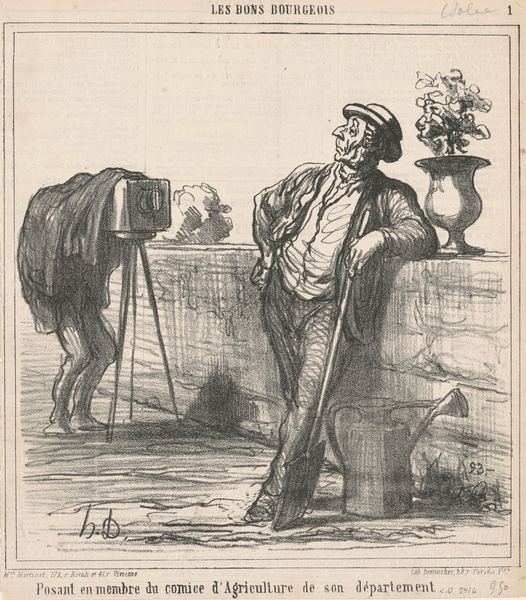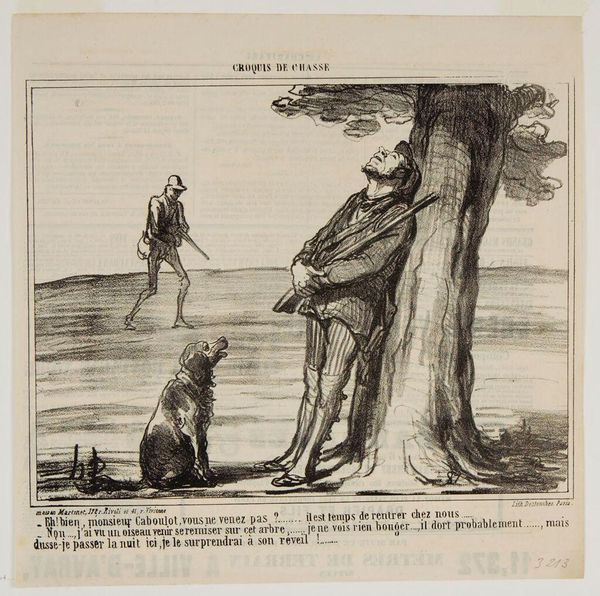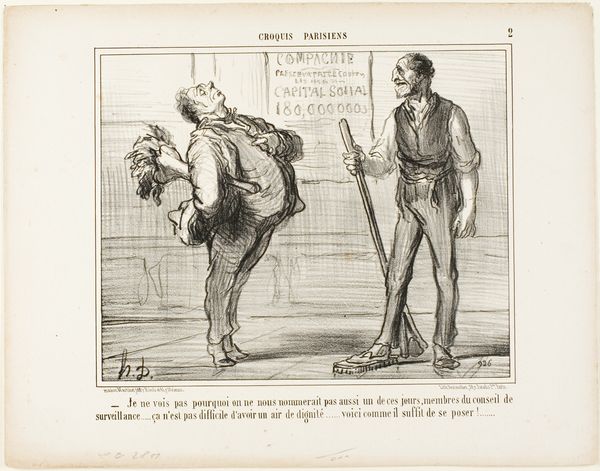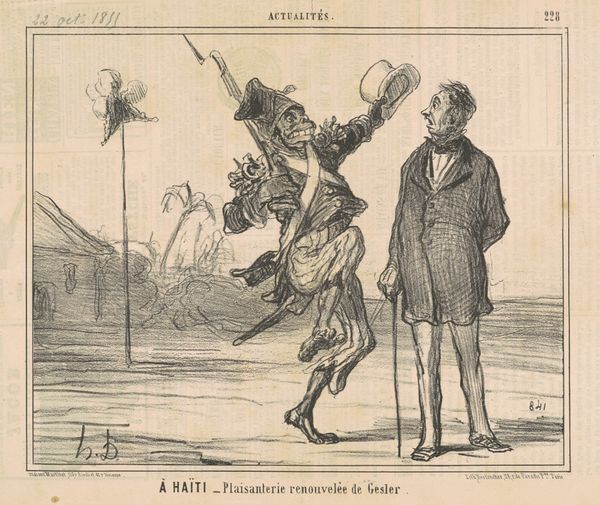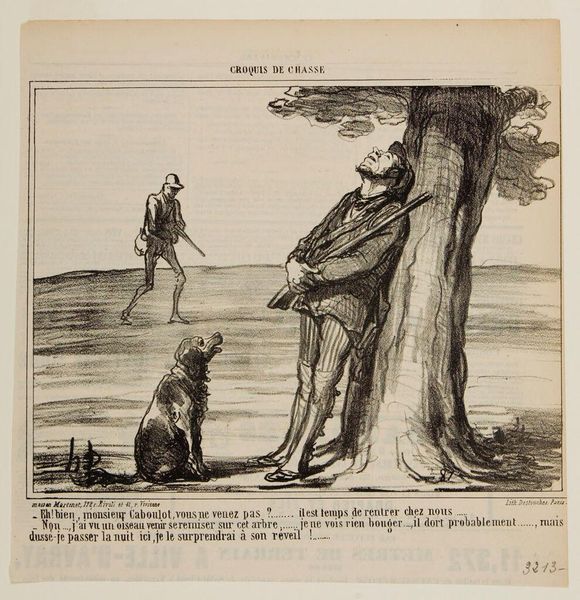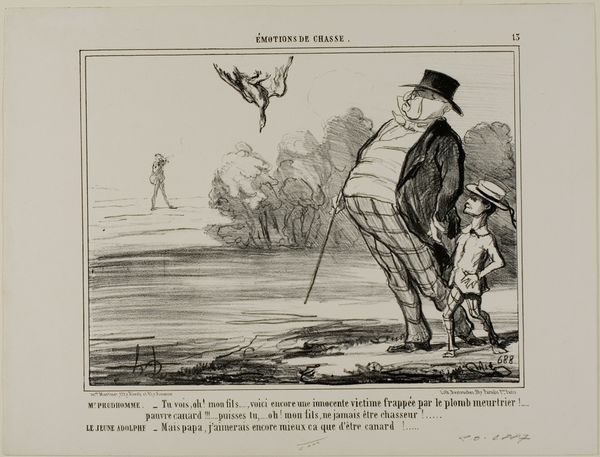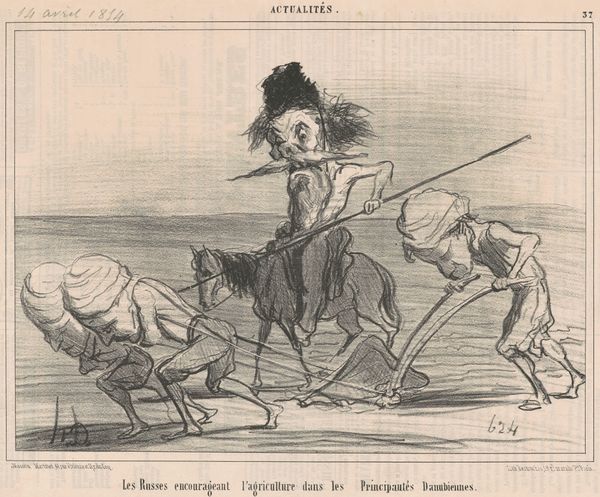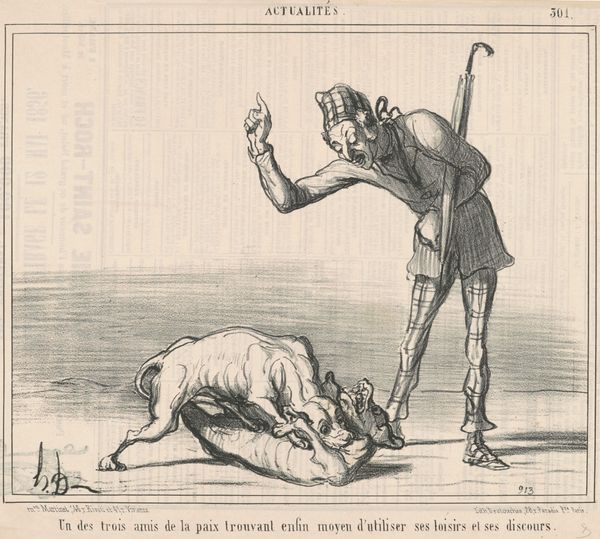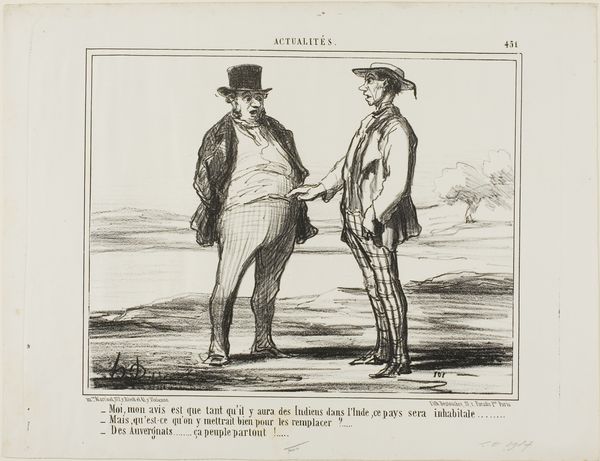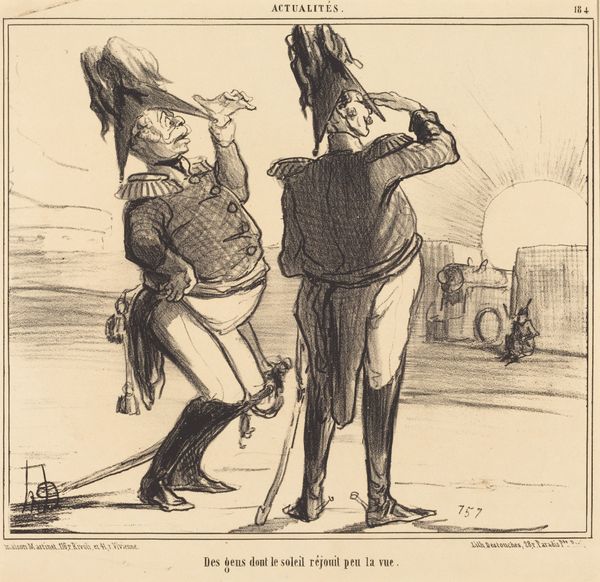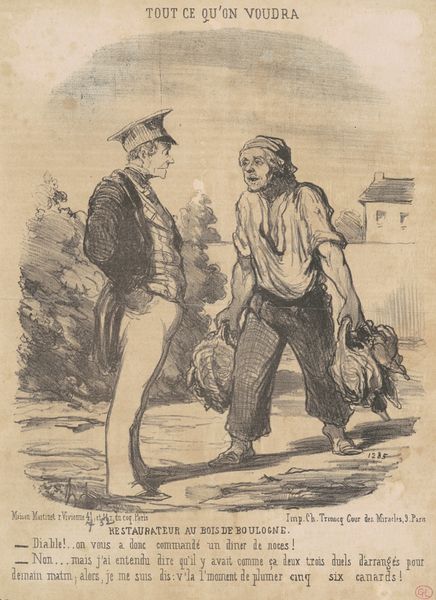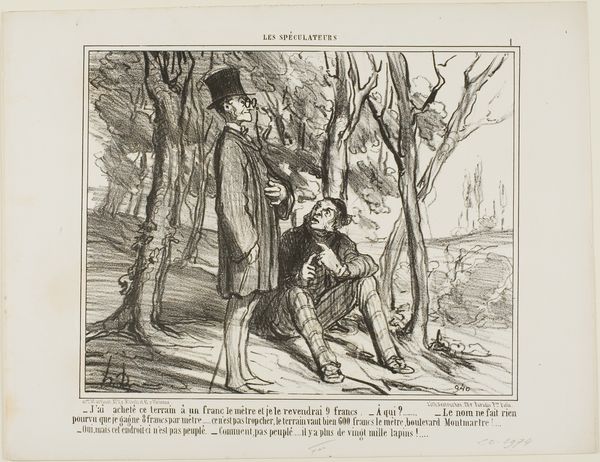
The Worries of a Wine Grower. “- We escaped the frost..... all we now have to worry about is the sun, the rain, the vine-mildew and all the rest...,” plate 397 from Actualités 1857
0:00
0:00
Dimensions: 209 × 244 mm (image); 273 × 356 mm (sheet)
Copyright: Public Domain
Curator: Before us, we have Honoré Daumier's lithograph from 1857, titled "The Worries of a Wine Grower. "- We escaped the frost… all we now have to worry about is the sun, the rain, the vine-mildew and all the rest…," part of his "Actualités" series, now residing at The Art Institute of Chicago. Editor: My first impression is one of quiet desperation. The stark contrast and lean lines really highlight the exhaustion etched onto the figures. Curator: Indeed, Daumier masterfully uses the lithographic process here. The greasy crayon on the stone allows for a wide range of tonal variations. It mirrors the uncertain financial straits of rural laborers who relied on increasingly industrialized wine production. The lines almost appear frantic in places, revealing the pressures of production. Editor: Absolutely, and notice how Daumier employs caricature not to merely ridicule, but to underscore the economic hardships faced by these growers. The exaggerated stoop of one figure speaks volumes about back-breaking labor and the anxiety over the crops. It's a visual encoding of the political commentary, don't you think? Curator: Precisely, his formal approach elevates what might be considered genre art, into an exploration of late romantic themes of man vs. nature, and man's connection to industrialization. There’s an emphasis on romantic expressiveness through formal choices. Editor: And that cramped composition, forcing us to confront the reality of these workers and their relationship to land as commodity. Daumier really emphasizes the figures and places them at the forefront; their plight is presented boldly, and demands engagement. Curator: The seemingly endless list of potential calamities the winegrower faces emphasizes the relentless economic precarity experienced by people during this time. The choice of printmaking meant it could reach a wide audience, making visible the exploitation inherent in wine production. Editor: Reflecting on the piece, I see how the technical mastery enhances Daumier’s capacity to render raw emotion; a silent scream that echoes across history, made indelible by a single sheet of paper and a keen observer. Curator: Agreed. Daumier forces us to acknowledge the unseen struggles underpinning even our most luxurious of products and recreations, leaving us to ponder our connection to systems of exploitation and our consumptive desires.
Comments
No comments
Be the first to comment and join the conversation on the ultimate creative platform.
